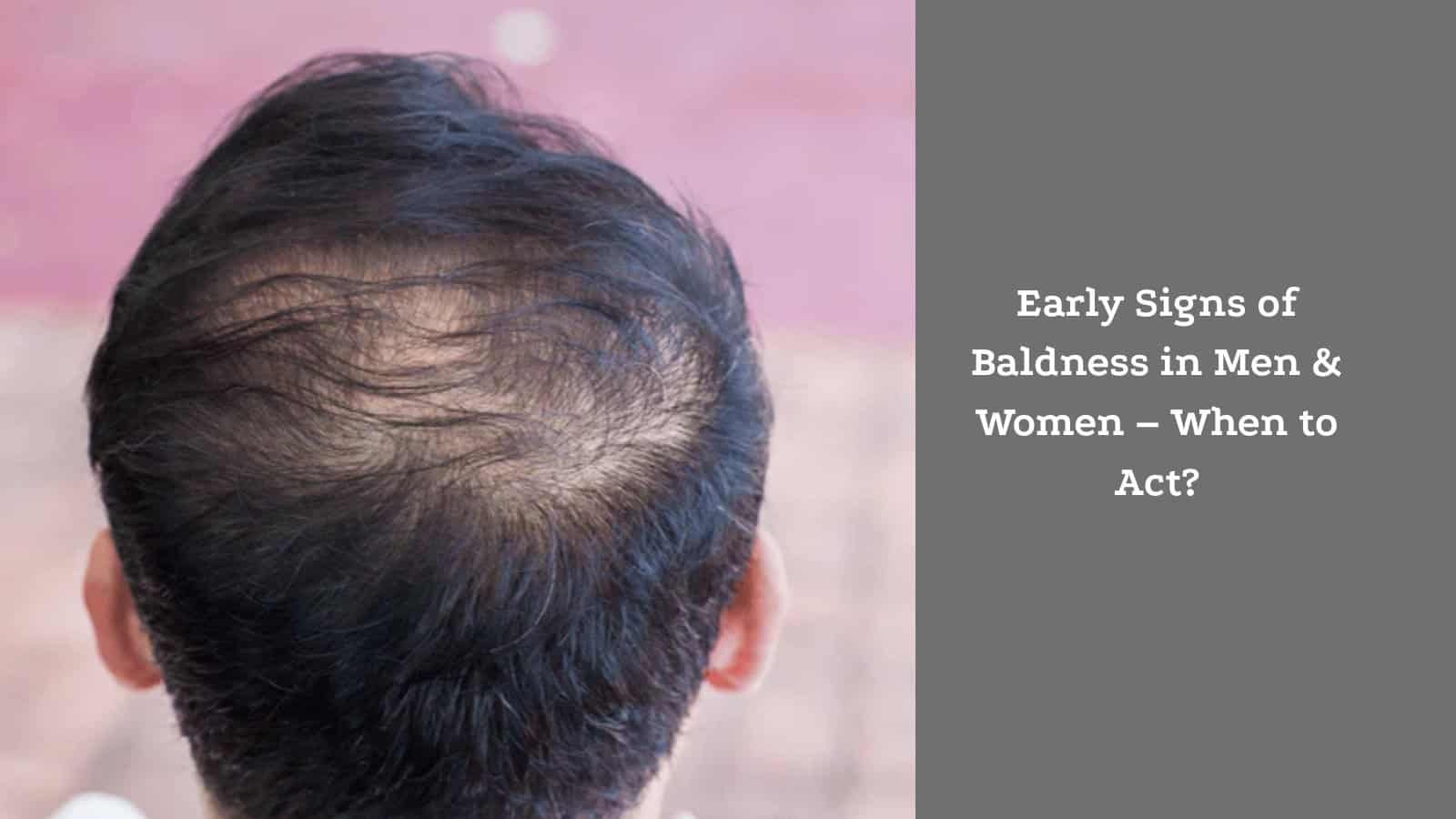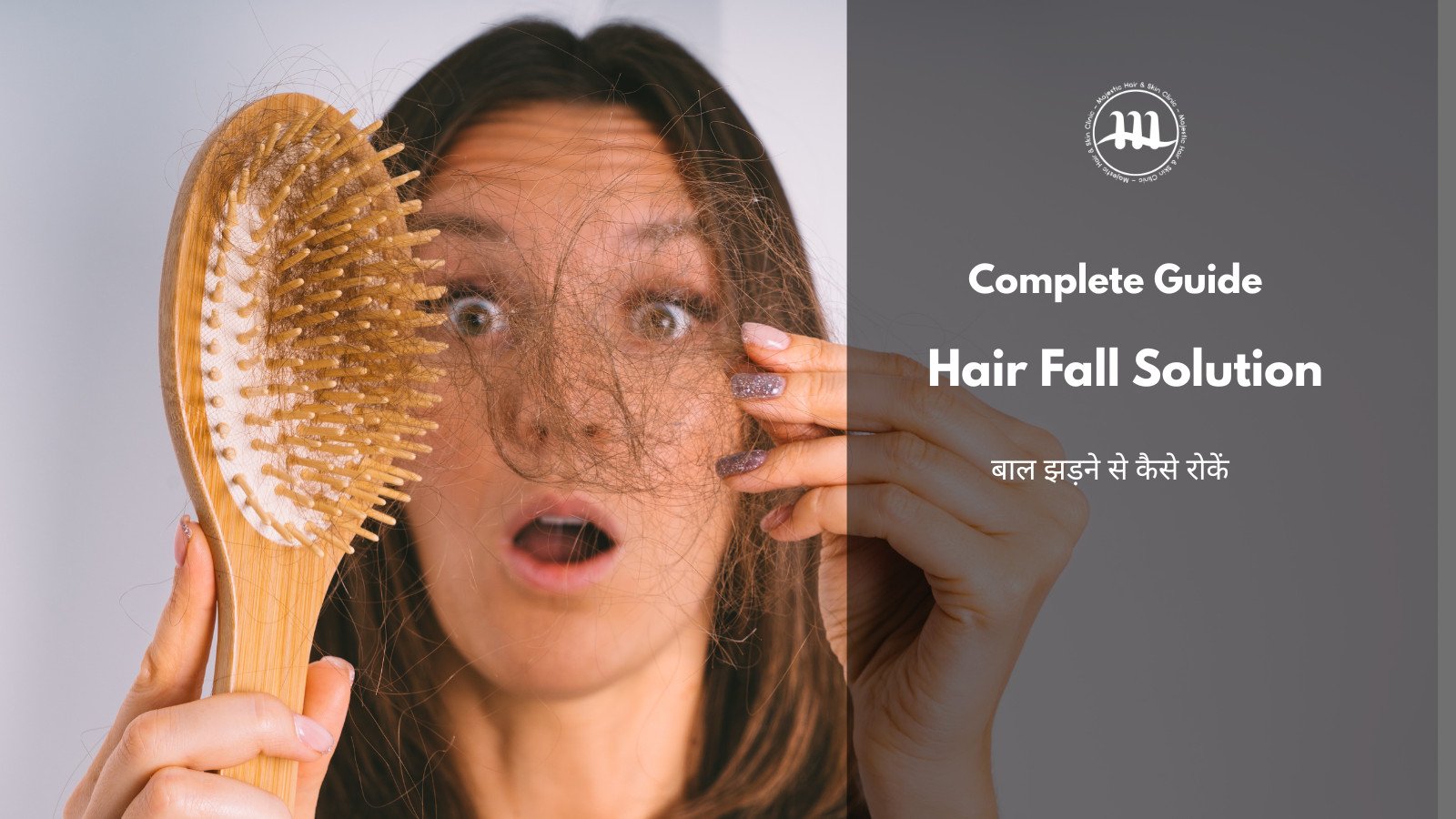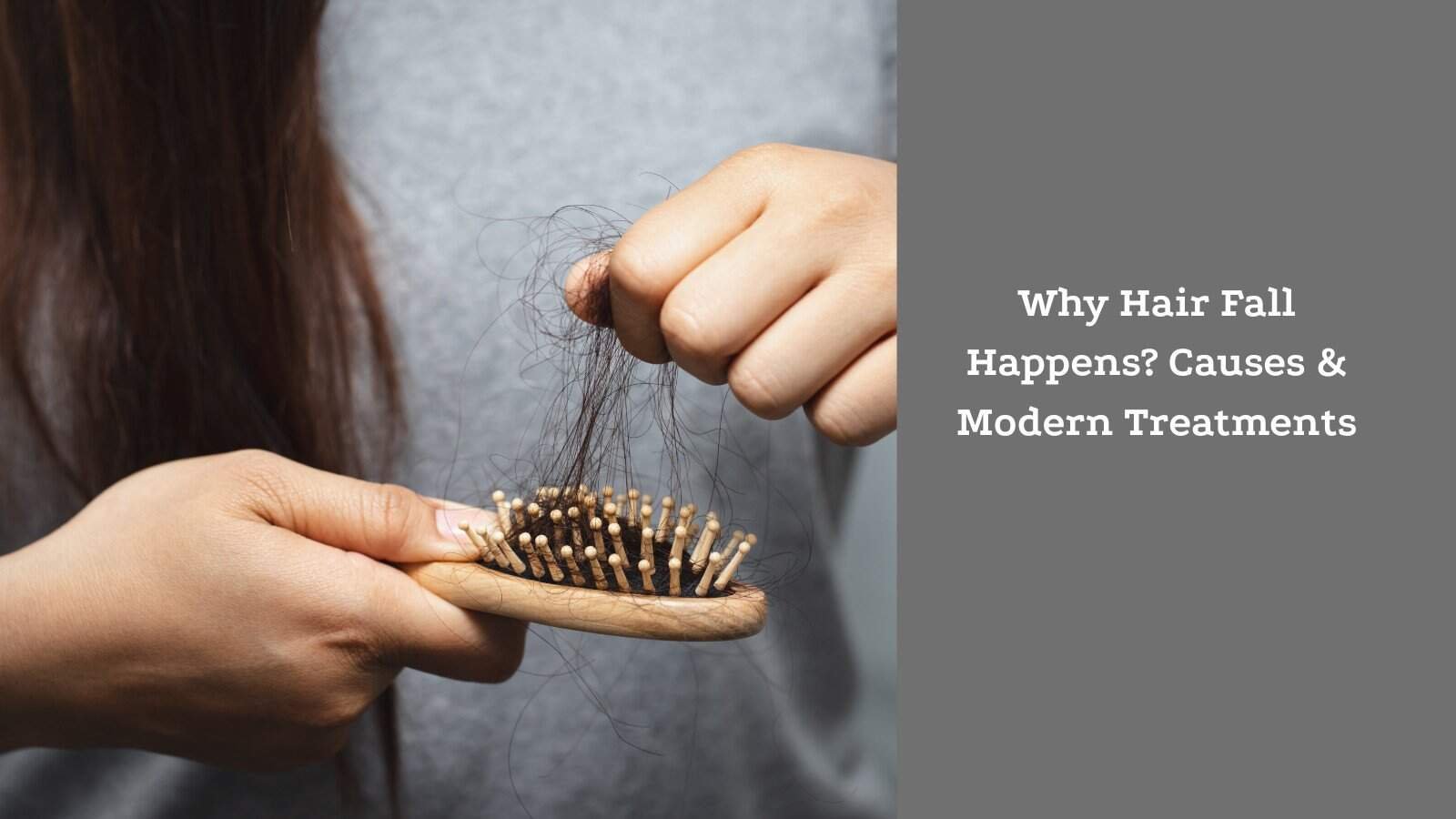Recognizing the first signs of hair thinning can make a huge difference in preventing long-term hair loss. Both men and women may notice subtle changes in hair density, with men often experiencing male pattern baldness symptoms such as a receding hairline or thinning at the crown. For women, hair may gradually appear finer, especially along the parting line. Early detection is key because taking action promptly can help slow or even reverse hair loss. FDA-approved treatments like Minoxidil and Finasteride are proven to strengthen hair follicles, maintain existing hair, and improve overall scalp health. Understanding the warning signs and addressing them with professional guidance ensures a proactive approach to hair care. With the right knowledge and timely intervention, you can maintain healthier, fuller hair for years to come.
What Causes Hair Loss?
Hair loss affects both men and women, but the patterns and causes often differ. In men, male baldness—also called male pattern alopecia—is the most common type. It usually starts with a receding hairline or thinning at the crown, often referred to as early stage male pattern baldness. Genetics play a major role, as a family history of baldness significantly increases the risk. Hormonal factors, particularly sensitivity to dihydrotestosterone (DHT), also contribute to hair follicle shrinkage and gradual hair thinning. Age further compounds these effects, making hair loss more noticeable over time.
Women, on the other hand, typically experience female pattern hair loss, which presents as diffuse thinning along the scalp rather than distinct bald patches.
Recognizing the underlying cause of hair loss early is crucial. Identifying whether hair thinning is genetic, hormonal, or age-related allows men to choose the best hair loss treatment, such as FDA-approved options, to slow progression and maintain healthier hair.
Early Signs of Baldness in Men
Recognizing the scalp first signs of hair thinning is key to addressing hair loss before it progresses. Many men start noticing male pattern baldness symptoms in their late teens or early 20s, and it’s common to wonder, “Is my crown thinning?” or notice signs of balding at 20.
Some of the most common early indicators include:
- Hairline Recession – A gradual retreat of the frontal hairline, often forming an “M” shape, is one of the earliest signs of male pattern baldness.
- Crown Thinning – Hair may become noticeably thinner at the crown or vertex, creating a small bald spot that slowly expands over time.
- Increased Shedding – More hair than usual on pillows, combs, or in the shower can indicate that follicles are entering a premature shedding phase.
At this stage, FDA-approved treatments like Minoxidil (topical) and Finasteride (oral) are highly effective. Minoxidil stimulates hair follicles to promote growth, while Finasteride reduces DHT levels to prevent further thinning. Early intervention not only slows hair loss but also improves the chances of maintaining a fuller, healthier scalp over the long term.
Early Signs of Baldness in Women
For many women, recognizing the first signs of hair thinning can be subtle but crucial for early intervention. Unlike men, who often experience distinct bald patches, women typically show female pattern hair loss, which presents as gradual, diffuse thinning across the scalp.
Some of the earliest indicators include:
- Widening Parting – The center part of the hair may appear wider than usual as follicles gradually weaken.
- Diffuse Thinning – Hair becomes less dense across the crown and top of the head, rather than forming complete bald spots.
- Increased Hair Shedding – Noticing more hair on the pillow, in the shower, or on brushes is a common early symptom.
Recognizing these signs early allows women to explore scientifically-backed treatments. Topical Minoxidil is FDA-approved for female hair loss and can stimulate follicles for signs of hair regrowth. Nutritional support, stress management, and gentle hair care routines also help slow thinning and improve scalp health. Early intervention increases the likelihood of maintaining fuller, healthier hair over time.
Signs of Hair Regrowth
After starting treatment, it’s important to recognize the signs of hair regrowth, as they indicate that your hair follicles are responding positively. For men using the best hair loss treatment for men, such as FDA-approved Minoxidil or Finasteride, several key indicators can signal progress:
- Baby Hairs – Fine, soft hairs appearing along the hairline or thinning areas are a positive sign that follicles are activating.
- Improved Density – Over time, thinning areas may look fuller as hair becomes thicker and more uniform.
- Reduced Shedding – A noticeable decrease in daily hair loss, such as less hair on pillows or in the shower, often accompanies regrowth.
Consistency is crucial. Treatments like Minoxidil need to be applied daily over several months to achieve optimal results. Patience and adherence to a scientifically-backed regimen maximize the chances of lasting, natural hair regrowth. Regular monitoring and follow-ups with a dermatologist or hair restoration specialist can further guide adjustments to ensure the best outcomes.
When to Act: Why Early Treatment Matters
Catching hair loss at the first signs of thinning can make a significant difference in long-term results. Men experiencing early stage male pattern baldness have the greatest chance of maintaining a fuller head of hair when treatment begins promptly. Ignoring these signs often leads to progressive thinning, making restoration more challenging.
Evidence-based approaches, including FDA-approved treatments like Minoxidil and Finasteride, are highly effective when started early. These solutions help strengthen hair follicles, reduce shedding, and slow the progression of male pattern baldness. Choosing the best hair loss treatment for men at this stage not only improves the likelihood of visible regrowth but can also delay or prevent the need for surgical interventions.
Dermatologists emphasize that early action is the closest approach to a male pattern baldness cure. While complete reversal may not always be possible, timely intervention ensures healthier hair and a higher success rate in preserving existing density, giving men confidence and control over their hair loss journey.
Best Hair Loss Treatments
When it comes to treating hair loss, evidence-based, FDA-approved options provide the most reliable results for both men and women. Choosing the best hair loss treatment for men or women depends on the type and stage of hair thinning.
- Minoxidil
- How it works: A topical solution that stimulates hair follicles, promoting growth and increasing hair density.
- Who should use it: Men and women experiencing early-stage thinning or male pattern baldness.
- Effectiveness: Clinically proven to slow hair loss and support signs of hair regrowth with consistent application.
- Finasteride
- How it works: An oral medication that blocks DHT, a hormone responsible for follicle shrinkage in men.
- Who should use it: Men with early stage male pattern baldness; not recommended for women of childbearing age.
- Effectiveness: Significantly reduces hair loss progression and can promote regrowth in affected areas.
- Low-Level Laser Therapy (LLLT)
- How it works: Uses light energy to stimulate cellular activity in hair follicles, improving density and thickness.
- Who should use it: Men and women seeking non-pharmaceutical options or adjunct therapy alongside Minoxidil or Finasteride.
- Effectiveness: Clinically shown to enhance hair growth and improve scalp health over regular use.
These treatments represent the most scientifically-backed options for managing hair loss and serve as the cornerstone of any strategy aiming for a male pattern baldness cure or maintaining healthy hair. Early adoption and consistency are key to achieving optimal results.
Get Your Hair Confidence with Majestic Derma, Delhi
Are you struggling with hair thinning, bald patches, or excessive hair fall? At Majestic Derma, Delhi, we offer advanced and personalized hair restoration treatments designed to bring back your natural hair density and confidence.
Our Specialized Hair Treatments Include:
- Hair Transplant (FUE & FUT) – Get permanent and natural-looking results with advanced follicular techniques performed by expert trichologists.
- Hair Patch / Non-Surgical Hair Replacement – Instant volume and coverage for bald areas without surgery, pain, or downtime.
- PRP Hair Treatment – A safe, natural, and effective therapy that uses your own platelets to stimulate hair regrowth.
- GFC Hair Treatment – The latest regenerative therapy using Growth Factor Concentrate (GFC) to strengthen hair roots and promote new growth.
Whether your concern is genetic hair loss, post-pregnancy hair fall, or stress-related thinning, our dermatology experts design a treatment plan that delivers visible, lasting results.
📍 Location: Majestic Derma Clinic, Delhi NCR
📞 Book a Consultation: https://majesticderma.com/
Conclusion
Spotting the first signs of hair thinning is essential for maintaining healthy hair. Recognizing male pattern baldness symptoms early allows men to take proactive steps, while noticing subtle thinning in women ensures timely care. Effective, FDA-approved treatments like Minoxidil and Finasteride can slow hair loss and promote signs of hair regrowth when started early. Consulting a board-certified dermatologist ensures personalized guidance and the best chance for long-lasting results. Early action is the key to preserving hair and confidence.





